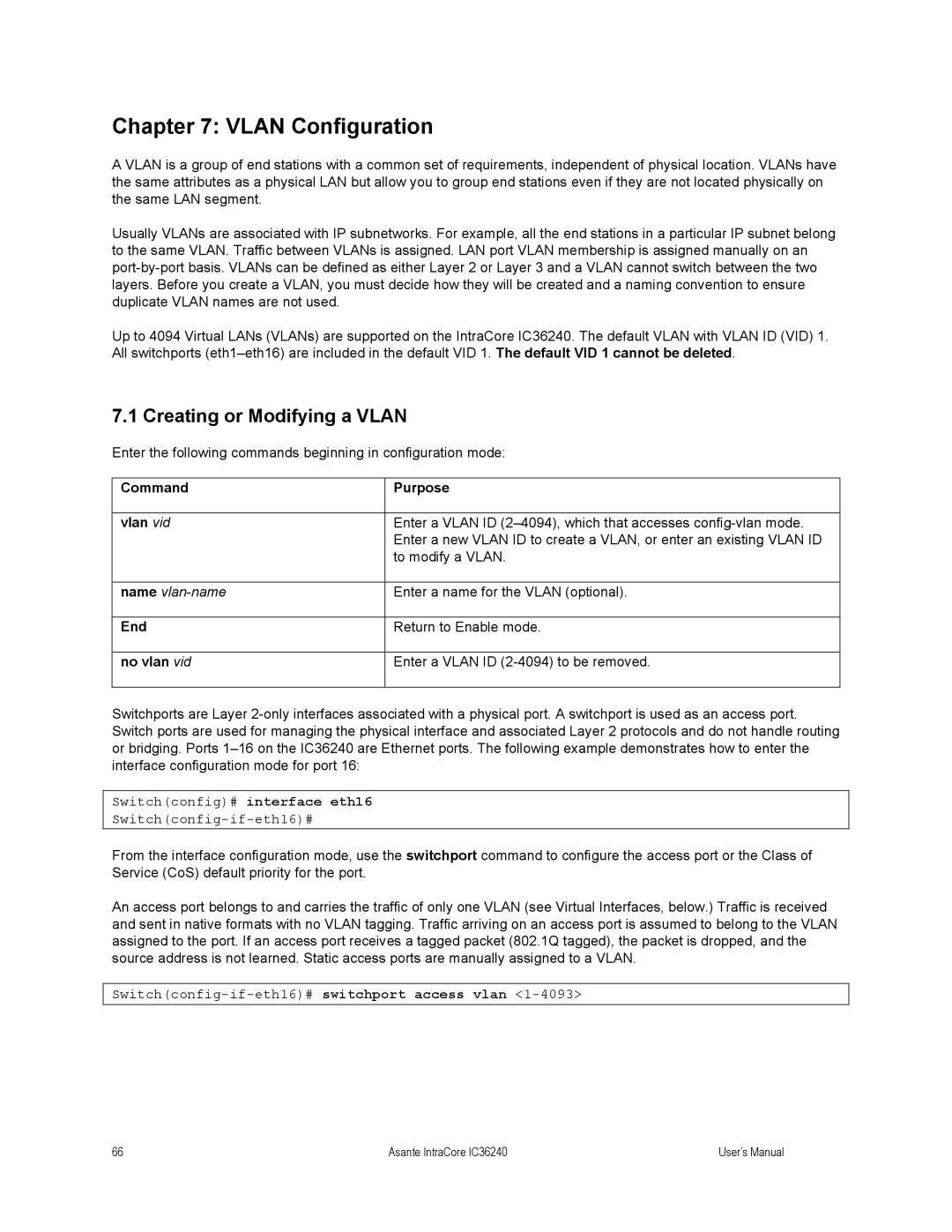
Chapter 7: VLAN Configuration
A VLAN is a group of end stations with a common set of requirements, independent of physical location. VLANs have the same attributes as a physical LAN but allow you to group end stations even if they are not located physically on the same LAN segment.
Usually VLANs are associated with IP subnetworks. For example, all the end stations in a particular IP subnet belong to the same VLAN. Traffic between VLANs is assigned. LAN port VLAN membership is assigned manually on an
Up to 4094 Virtual LANs (VLANs) are supported on the IntraCore IC36240. The default VLAN with VLAN ID (VID) 1. All switchports
7.1 Creating or Modifying a VLAN
Enter the following commands beginning in configuration mode:
Command | Purpose |
|
|
vlan vid | Enter a VLAN ID |
| Enter a new VLAN ID to create a VLAN, or enter an existing VLAN ID |
| to modify a VLAN. |
|
|
name | Enter a name for the VLAN (optional). |
|
|
End | Return to Enable mode. |
|
|
no vlan vid | Enter a VLAN ID |
|
|
Switchports are Layer
Switch(config)# interface eth16
Switch(config-if-eth16)#
From the interface configuration mode, use the switchport command to configure the access port or the Class of Service (CoS) default priority for the port.
An access port belongs to and carries the traffic of only one VLAN (see Virtual Interfaces, below.) Traffic is received and sent in native formats with no VLAN tagging. Traffic arriving on an access port is assumed to belong to the VLAN assigned to the port. If an access port receives a tagged packet (802.1Q tagged), the packet is dropped, and the source address is not learned. Static access ports are manually assigned to a VLAN.
66 | Asante IntraCore IC36240 | User’s Manual |
